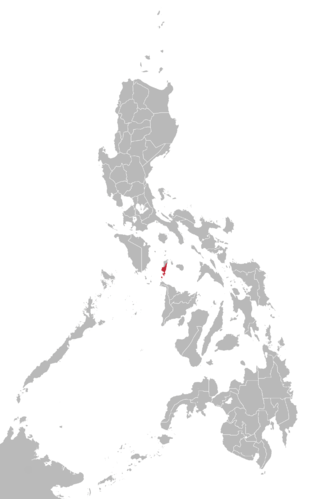(Redirected from Inonhan )
Austronesian language of the Philippines
Not to be confused with Ongan languages .
‹ The template Infobox language considered for merging . ›
Onhan is a regional Western Bisayan language spoken, along with the Romblomanon and Asi languages , in the province of Romblon , Philippines . The language is also known as Inunhan and Loocnon .
The Onhan language has three variants – those spoken in the municipalities of Santa Maria and Alcantara use /l/ instead of /r/. Example: kararaw is kalalaw , and other speakers change /r/ or /l/ to /d/ as in run or lun to dun . Specifically, Onhan is spoken on the following islands within Romblon:
As a variant of the Kinaray-a language , some speakers are found on the island of Boracay in Aklan province as well as parts of the island of Panay , specifically in the following municipalities: Malay , Nabas and Buruanga . In the provinces of Oriental and Occidental Mindoro , migrant Onhan speakers from Tablas Island brought the language to the following municipalities: San Jose , Magsaysay , Bulalacao , Mansalay , Roxas , and some parts of Bongabong . As such, it is very much related to Kinaray-a and Kuyonon .
Grammar
Pronouns
Absolutive1 (emphatic)
Absolutive2 (non-emphatic)
Ergative
Oblique
1st person singular
ako
takon
nakon , ko
akon
2nd person singular
ikaw , kaw
timo
nimo , mo
imo
3rd person singular
imaw
–
nana
ana
1st person plural inclusive
kita
taton
naton , ta
aton
1st person plural exclusive
kami
tamon
namon
amon
2nd person plural
kamo
tinyo
ninyo
inyo
3rd person plural
sanda
–
nanda
anda
Numbers
Number
Onhan
1
Isyá
2
Darwá
3
Tatló
4
Ap-at
5
Limá
6
An-um
7
Pitó
8
Waló
9
Siyám
10
Púlô
100
Isya-kagatús
1000
Isya-kalibó
First
Una
Second
Pangalwa
Third
Pangatlo
Fourth
Pang-ap-at
Fifth
Pang-limá
Sixth
Pang-an-um
Seventh
Pang-pitó
Eighth
Pang-waló
Ninth
Pang-siyám
Tenth
Pang-púlô
Literature
The New Testament was translated into Bisaya-Inunhan by Eldon Leano Talamisan and published in 1999.
The Harrow (Ang Singkaw ), an official publication of Romblon State University , publishes Inunhan poems, stories and other genres of literature.
References
Onhan at Ethnologue Quadra-Balibay, Angie (2020-02-06). "UP scientists, linguists develop online dictionary to save endangered Filipino languages" . GoodNewsPilipinas.com . Retrieved 2024-02-01.
Categories :
Text is available under the Creative Commons Attribution-ShareAlike License. Additional terms may apply.
**DISCLAIMER** We are not affiliated with Wikipedia, and Cloudflare.
The information presented on this site is for general informational purposes only and does not constitute medical advice.
You should always have a personal consultation with a healthcare professional before making changes to your diet, medication, or exercise routine.
AI helps with the correspondence in our chat.
We participate in an affiliate program. If you buy something through a link, we may earn a commission 💕
↑
 Inonhan language map based on Ethnologue
Inonhan language map based on Ethnologue